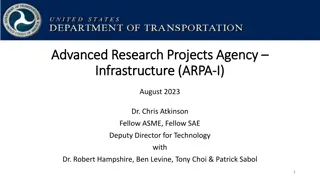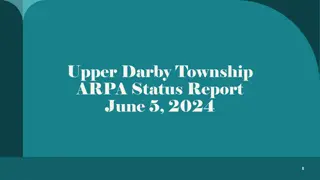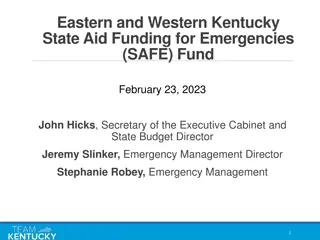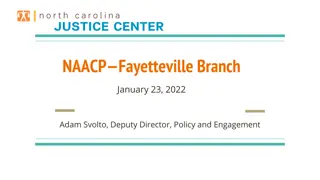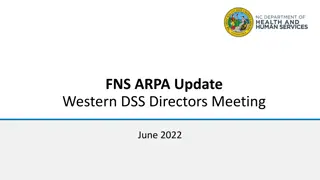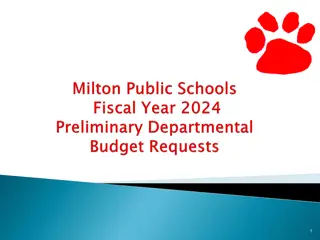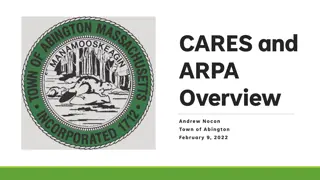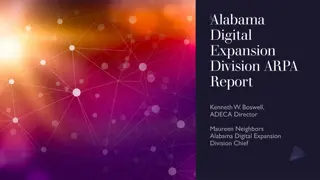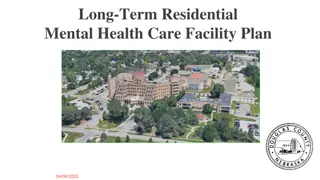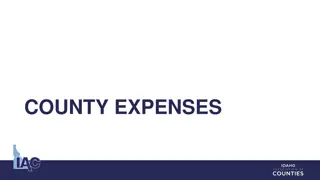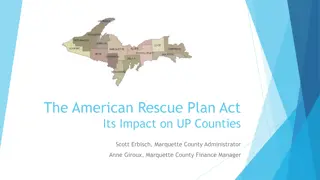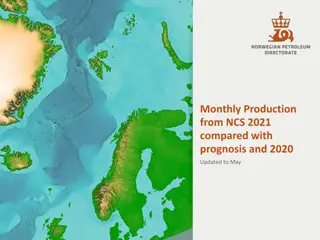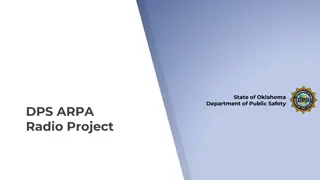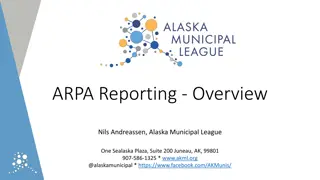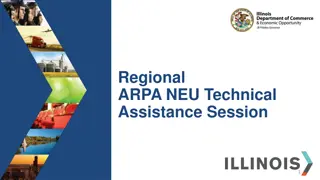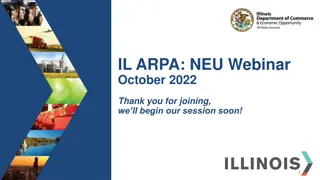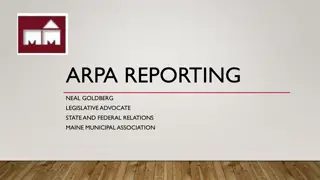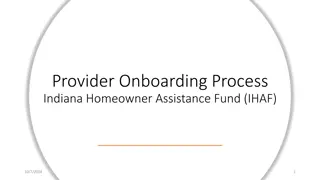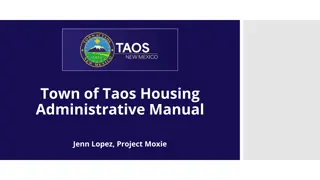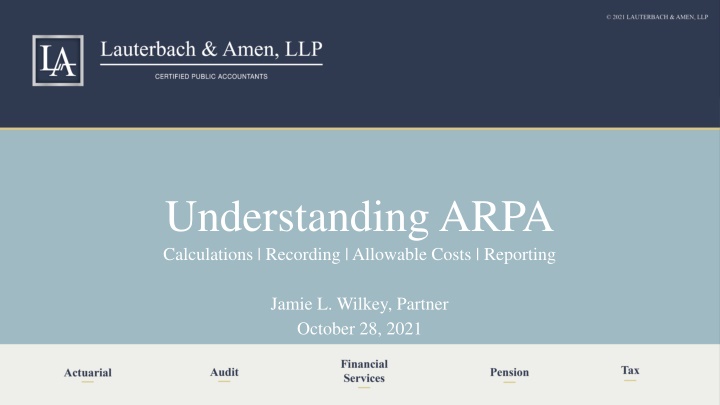
Understanding ARPA Calculations, Recording, and Allowable Costs
Explore the essential details of ARPA calculations, recording award receipts, allowable costs, and reporting guidelines. Learn about the distribution of funds to local governments, timelines for fund usage, and the importance of recording awards accurately. Stay informed on how to manage ARPA funds effectively.
Download Presentation

Please find below an Image/Link to download the presentation.
The content on the website is provided AS IS for your information and personal use only. It may not be sold, licensed, or shared on other websites without obtaining consent from the author. If you encounter any issues during the download, it is possible that the publisher has removed the file from their server.
You are allowed to download the files provided on this website for personal or commercial use, subject to the condition that they are used lawfully. All files are the property of their respective owners.
The content on the website is provided AS IS for your information and personal use only. It may not be sold, licensed, or shared on other websites without obtaining consent from the author.
E N D
Presentation Transcript
Understanding ARPA Calculations | Recording | Allowable Costs | Reporting Jamie L. Wilkey, Partner October 28, 2021
ARPA Overview Coronavirus relief granted $350 billion in proceeds to States and local governments Entitlement Units Larger government entities, such as counties and cities with populations larger than 50,000 Receives funding directly from the Treasury Non-Entitlement Units (NEU s) Populations less than 50,000 Receives funding through the State 3
ARPA Overview Local governments will receive 2 distributions 50% as early as May 2021 Remaining 50% one year later The Treasury released the Department s Interim Final Rule on May 10, 2021 REMINDER: They requested comments back on the Interim Final Rule and we have not heard back yet from the Treasury in response to those submitted comments .more to come 4
Funds can be used to cover costs incurred/obligatedby December 31, 2024 Obligated per Uniform Guidance: Financial obligations, when referencing a recipient s or subrecipient s use of funds under Federal award, means orders placed for property or services, contracts and subawards made, and similar transactions that require payment. Funds can cover a performance period that ends December 31, 2026 Timeline 5
RECORDING AWARD RECEIPTS 6
Recording Award Receipts - Overall ARPA requirements, such as the occurrence of eligible expenses funds are subject to eligibility Therefore, funds received should be recognized as a liability (unearned revenue) until applicable eligibility requirements are met 7
The Treasury does NOT mandate what fund you record your award in From a practical standpoint record the award in the fund that will expend the proceeds (matching principal) Where to Record your ARPA Award? 8
Initial Recording Until you have a spending plan and expenses have occurred likely your General Fund will be used for the initial recording: General Fund Debit $ Receipt Amount Credit Cash Unearned Revenue $ Receipt Amount Once you have eligible expenses, you should move cash to the fund where expenses have been incurred, and revenue should then be recorded 9
Example Expenses in Capital Projects Fund WITH Commingled Cash In our example below, the Municipality has eligible expenditures in the Capital Projects Fund, so cash and revenue now need to be moved: General Fund Debit $ Expense Amount Credit Unearned Revenue Cash $ Expense Amount Capital Projects Fund Debit $ Expense Amount Credit Cash Credit Revenue $ Expense Amount 10
Example Expenses in Capital Projects Fund WITH Commingled Cash Capital Projects Fund Debit $ Expense Amount Credit Expense Cash $ Expense Amount 11
Example Expenses in Capital Projects Fund WITHOUT Commingled Cash In our example below, the Municipality has eligible expenditures in the Capital Projects Fund, so cash and revenue now need to be moved: General Fund Debit $ Expense Amount Credit Unearned Revenue Due to Capital Projects Fund $ Expense Amount Capital Projects Fund Debit $ Expense Amount Credit Due from General Fund Credit Revenue $ Expense Amount 12
Example Expenses in Capital Projects Fund WITHOUT Commingled Cash Now we must move the cash: General Fund Debit $ Expense Amount Credit Due to Capital Projects Fund Cash $ Expense Amount Capital Projects Fund Debit $ Expense Amount Credit Cash Due from General Fund $ Expense Amount 13
Eligible Expenses 4 Eligible Use Categories 1) Public Health and Negative Economic Impacts 2) Premium Pay for Essential Workers 3) Investments in Water, Sewer and Broadband 4) Revenue Loss 15
ARPA funds can be used to aid households, businesses individuals, such as rent, mortgage or utility assistance for costs incurred by households, businesses or individuals prior to MARCH 3, 2021 1) Public Health and Negative Economic Impacts and 16
1) Public Health and Negative Economic Impacts Continued Services and Programs to Contain and Mitigate the Spread of COVID-19 Medical expenses Isolation or quarantine Support for vulnerable populations to access medical/public health services monitoring for variants) Enforcement of public health orders Public communication efforts Vaccination programs Contact tracing Testing PPE purchases Enhancement of healthcare capacity, including alt. care Enhancements of public health data systems Public health surveillance (for example, Support for prevention, mitigation, or other services in congregate living facilities and schools Capital investments in public facilities to meet pandemic operational needs Ventilation improvements in key settings like healthcare facilities Services to Address Behavioral Healthcare Needs Exacerbated by the Pandemic Mental health treatment Substance misuse treatment Hotlines or warmlines Services or outreach to promote access to health and social services Other behavioral health services Crisis intervention 17
1) Public Health and Negative Economic Impacts Continued Addressing the Negative Economic Impacts Caused by the Public Health Emergency Delivering Assistance to Workers and Families, including aid to unemployed workers and job training, as well as aid to households facing food, housing, or other financial insecurity. In addition, these funds can support survivor s benefits for family members of COVID-19 victims Supporting Small Businesses, helping them address financial challenges caused by the pandemic and to make investments in COVID-19 prevention and mitigation tactics, as well as to provide technical assistance. To achieve these goals, recipients may employ this funding to execute a broad array of loan, grant, in-kind assistance, and counseling programs to enable small businesses to rebound from the downturn Rebuilding Public Sector Capacity, by rehiring public sector staff and replenishing unemployment insurance (UI) trust funds, in each case up to pre-pandemic levels. Recipients may also use this funding to build their internal capacity to successfully implement economic relief programs, with investments in data analysis, targeted outreach, technology infrastructure, and impact evaluations Speeding the Recovery of the Tourism, Travel and Hospitality Sectors, supporting industries that were particularly hard-hit by the COVID-19 emergency and are just not beginning to mend. Similarly impacted sectors within a local area are also eligible for support 18
1) Public Health and Negative Economic Impacts - Continued Serving the Hardest-Hit Communities and Families Disparities and the Social Determinants of Health, through funding for community health workers, public benefits navigators, remediation of lead hazards, and community violence intervention programs Addressing Educational Disparities through new or expanded early learning services, providing additional resources to high-poverty school districts, and offering educational services like tutoring or afterschool programs as well as services to address social, emotional, and mental health needs Addressing Health Investments in Housing and Neighborhoods, such as services to address individuals experiencing homelessness, affordable housing development, housing vouchers, and residential counseling and housing navigation assistance to facilitate moves to neighborhoods with high economic opportunity Promoting Health Childhood Environments, including new or expanded high quality childcare, home visiting programs for families with young children, and enhanced services for child welfare-involved families and foster youth 19
1) Public Health and Negative Economic Impacts - Continued Payroll and covered benefit expenses for public health, healthcare, human services, public safety and similar employees, to the extent that they work on the COVID-19 response. Will NOT be able to just claim public safety payroll expenses like CARES/CURES money Employees must be actively working on the COVID-19 response Will need to submit supporting documentation to validate they are actively working on the COVID-19 response 20
ARPA funds can be used to provide premium pay retroactively for workers performing essential work during the COVID-19 public health emergency. This pay must be in addition to wages already paid, and the obligation to provide such pay must not have been incurred prior to March 3, 2021 2) Premium Pay for Essential Workers 21
1) Premium Pay to Essential Workers Continued Essential Workers: Workers at farms, food production facilities, grocery stores, and restaurants Public health and safety staff Childcare workers, educators, and school staff Staff at nursing homes, hospitals and home-care settings Janitors and sanitation workers Truck drivers, transit staff, and warehouse workers Social service and human services staff 22
ARPA funds can be used to make necessary investments in water, sewer, or broadband infrastructure. Eligible projects must be planned or started prior to March 3, 2021, provided that the actual project costs covered by the funds were incurred after March 3, 2021 3) Investments in Water, Sewer and Broadband 23
3) Investments in Water, Sewer and Broadband - Continued Drinking Water Infrastructure Projects Building or upgrading transmission systems Building or upgrading storage systems Building or upgrading facilities Building or upgrading distribution systems Replacement of lead service lines Wastewater Infrastructure Projects Managing and treating stormwater or subsurface drainage water Securing publicly-owned treatment works Constructing publicly-owned treatment infrastructure Facilitating water reuse Generally, these are projects that align with the EPA s Clean Water State Revolving Fund and Drinking Water State Revolving Fund projects 24
3) Investments in Water, Sewer and Broadband - Continued Broadband Projects Areas lacking a wireline connection that reliably delivers minimum speeds of 25 Mbps download and 3 Mbps upload Must include use of modern technologies that deliver services offering reliable 100 Mbps download and 100 Mbps upload speeds Investments should be made in areas currently unserved or underserved Prioritize projects that achieve last-mile connections to households and businesses 25
The Treasurys Interim Final Rule provides governments a broader latitude to use funds for the provision of government services to the extent of reduction in revenue. The use of lost revenue ARPA funds for services must be forward looking for costs incurred after March 3, 2021 4) Revenue Loss government 26
4) Revenue Loss Overall items to note: The amount of revenue loss CAN T just be deposited to replenish lost reserves the amount calculated still must be SPENT on eligible expenses This calculation ONLY determines the categories that you can spend your money on. The Revenue Loss Category has the most flexibility with spending The calculation assumes a 4.1% revenue growth factor, so your calculation may result in more revenue loss than you were expecting The amount of your revenue loss calculation must be spent on the Interim Final Rule s non-exclusive list of government services that include providing services or aid to citizens 27
4) Revenue Loss Continued Calculating your Revenue Loss Amount Recommended use of the GFOA revenue loss calculator https://www.gfoa.org/materials/arpa-revenue-calculator Some tips in doing your calculation Revenue is calculated on a full-accrual, entity-wide basis so make sure can tie your Base Year Revenue tab of the calculator to your Statement of Activities in your audit. Base Year Revenue tab calculation is based on your FISCAL year end For April year ends, this will be using your 4/30/2019 Audited Financial Statements For December year ends, this will be using your 12/31/2019 You will then provide the three previous FISCAL years on the Growth Rate tab of the calculator Actual revenue beginning in 2020 per the Actual Revenue tab will be based on a DECEMBER year end for ALL entities 28
4) Revenue Loss Continued Revenue calculations exclude several items: Federal Revenue/Grants Refunds and other reclass/correction amounts Proceeds from debt issuance or sale of investments Revenues generated by utilities Any reduction in revenue is PRESUMED to be from the pandemic impact and you don t have to prove it was (assumes a 4.1% revenue growth each year) Your revenue loss calculation will be done at 4 points in time: 12/31/2020, 12/31/2021, 12/31/2022 and 12/31/2023 29
4) Revenue Loss Continued Once you complete your Revenue Loss calculation, you have determined the dollar amount you are allowed to spend on this category of expenses These funds must be used on the non-exclusive list of government services These funds can be used on pay-go infrastructure Practice of funding the costs of ongoing capital from existing reserves/cash on hand, rather than from borrowed funds. An entity can use ARPA funds to start a capital project and then finish it with future economic revenues or bonds/long-term debt borrowings 30
4) Revenue Loss Continued These funds can be used on the following: Maintenance of infrastructure Pay-go spending for building new infrastructure, including roads Modernization of cybersecurity, including hardware, software, and protection of critical infrastructure Health services Environmental remediation School or educational services Provision of police, fire and other public safety services 31
EXCLUDED EXPENSES 3 2
Excluded Expenses Paying principal or interest on existing outstanding debt, including short-term debt Paying fees or issuance costs related to the issuance of new debt Replenishing a rainy-day fund/reserve funds Making pension deposits (outside of your normal funding for the year) to pre-fund or reduce your pension liability Paying legal settlements or judgments 33
REPORTING REQUIREMENTS 3 4
Reporting Requirements Project and Expenditure Report Recover Plan Performance Report Recipient Interim Report By October 31, 2021, and then 30 days after the end of each quarter thereafter (NOW EXTENDED TO JANUARY 31, 2022) States, U.S. territories, metropolitan cities and counties with a population that exceeds 250,000 residents Metropolitan cities and counties with a population below 250,000 residents which received more than $5 million in SLRFR funding By August 31, 2021,and annually thereafter by July 31 By August 31, 2021, with expenditures by category Tribal Governments Metropolitan cities and counties with a population below 250,000 residents which received less than $5 million in SLRFR funding Not Required By October 31, 2021, and then annually thereafter (NOW EXTENDED TO APRIL 30, 2022) NEUs (Non-Entitelment Units) Not Required 35
Required Information Project and Expenditure Reports 1) Projects Project name, identification number (created by you), expenditure category, description (clear and 50-250 words), and status of completion 2) Expenditures Current period obligation, cumulative obligation, current period expenditure, cumulative expenditure 3) Project Status Four categories related to status: 1) Not Started, 2) Completed Less Than 50%, 4) Completed 50% or More, and 4) Completed 36
Required Information Project and Expenditure Reports Continued 4) Project Demographic Distribution Recipients will be required to identify whether or not the project is serving an economically disadvantaged community 5) Subawards Detailed obligation and expenditure information for any contracts and grants awarded, loans issued, transfers made to other government entities, and direct payments made by the recipient that are greater than or equal to $50,000 6) Civil Rights Compliance This information may include a narrative describing the recipient s compliance with Title VI, along with other questions and assurances 37
Jamie Wilkey |Partner LAUTERBACH & AMEN, LLP 668 N. River Road | Naperville, Illinois 60563 Phone: 630.393.1483 | Direct: 630.209.1035 | Fax: 630.393.2516 jwilkey@lauterbachamen.com | lauterbachamen.com Questions??? 38

